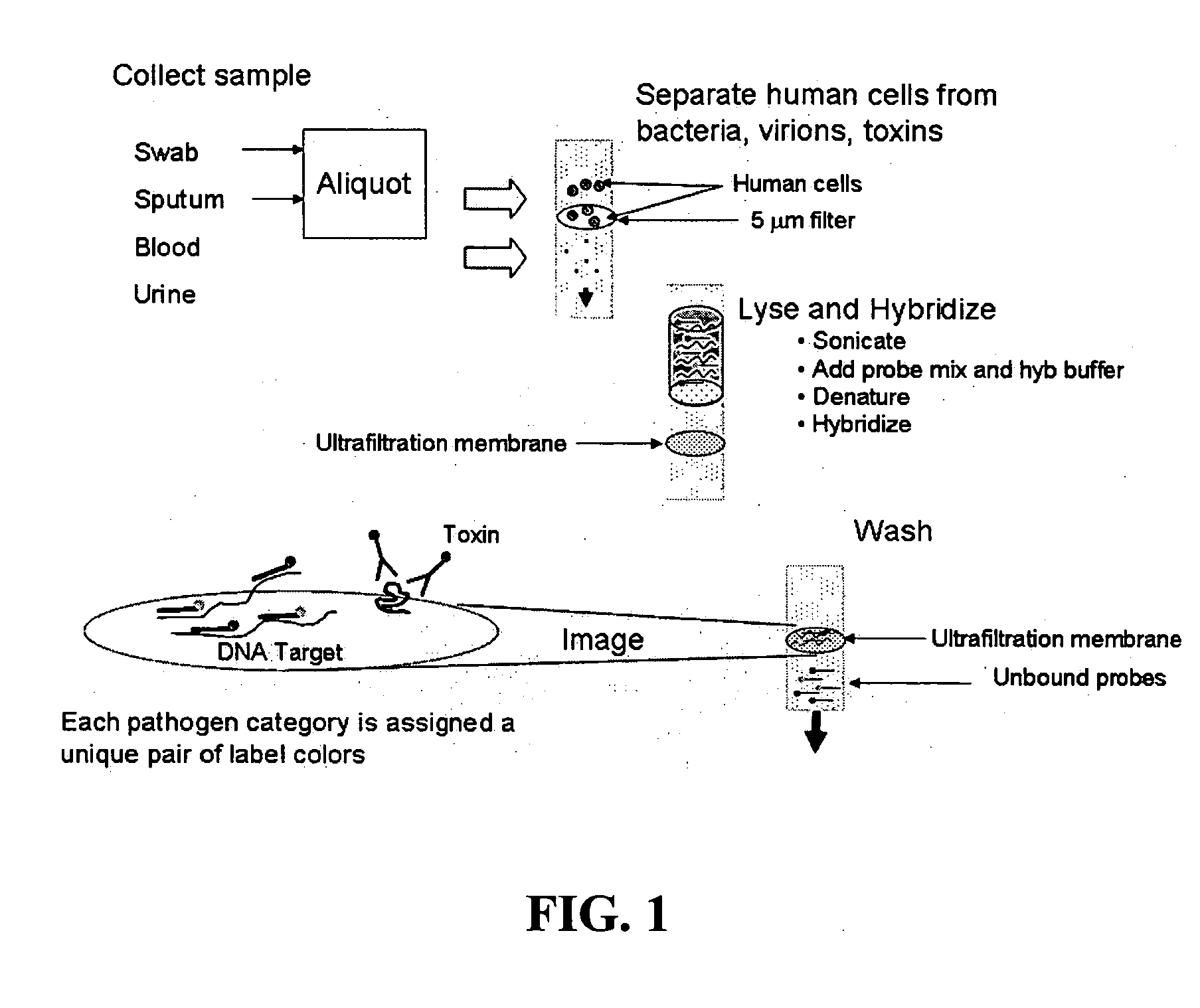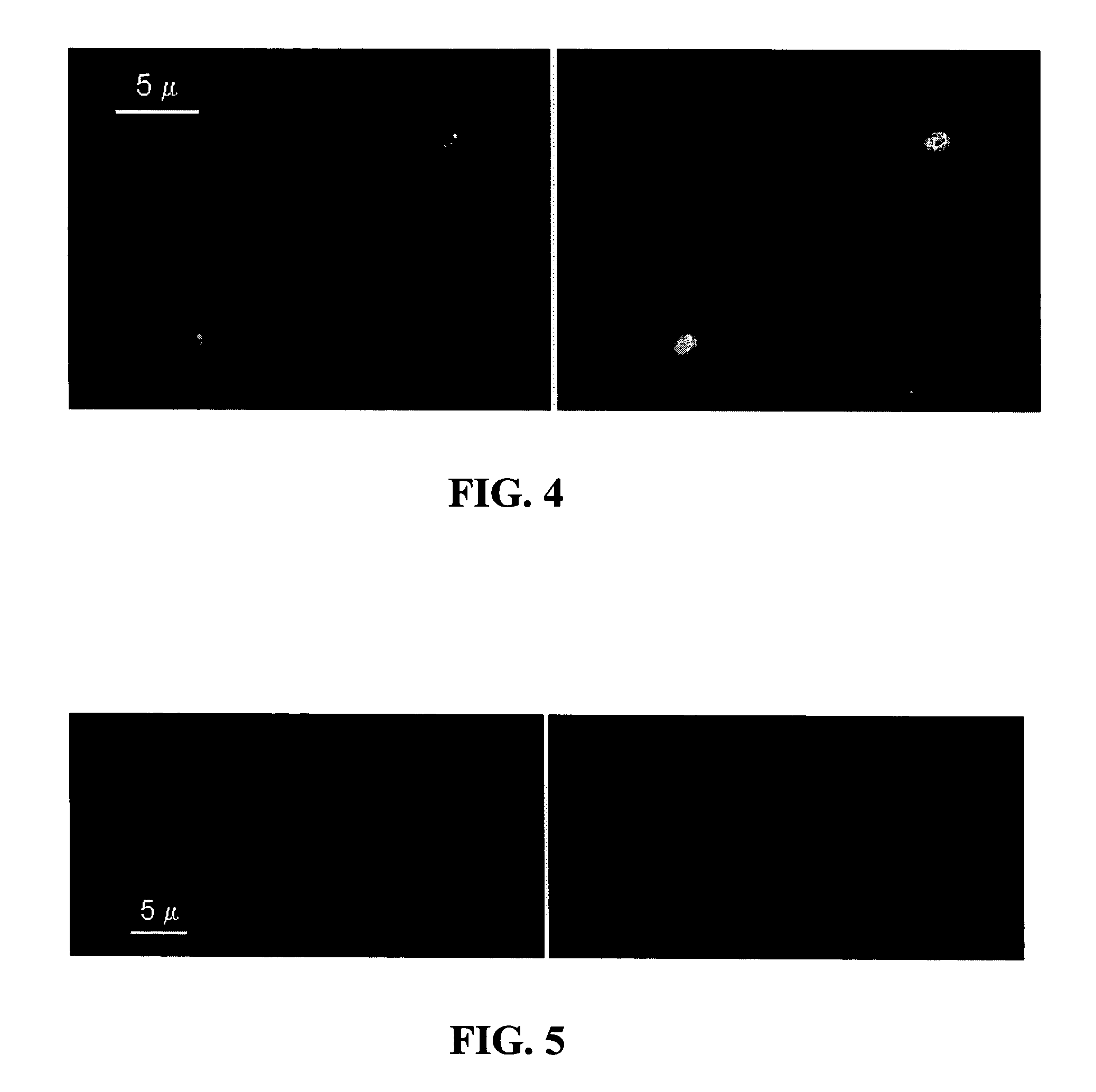Methods and compositions for identifying chemical or biological agents using multiplexed labeling and colocalization detection
a chemical or biological agent and labeling technology, applied in the field of methods and compositions for identifying chemical or biological agents using multiplexed labeling and colocalization detection, can solve the problems of many viruses without clinically useful assays, inability to reliably diagnose infectious agents in clinical samples, and extremely limited capacity for rapid diagnostic respons
- Summary
- Abstract
- Description
- Claims
- Application Information
AI Technical Summary
Benefits of technology
Problems solved by technology
Method used
Image
Examples
Embodiment Construction
[0071] The present invention provides a method for determining whether a sample comprises a target chemical or biological agent, such as a pathogenic agent, e.g., a virus, a bacterium, a prion, or a toxic substance, or any other macromolecules, e.g., a DNA or a protein, using label multiplexing and colocalization detection. The sample can be any sample for which the existence of a target chemical or biological agent is to be determined.
[0072] In some embodiments, the sample is from an animal, e.g., a human or a non-human mammal, e.g., horses, cows, pigs, dogs, cats, sheep, goats, mice, rats, etc. The sample can be a body fluid, e.g., blood, urine, sputum, stool, and nasal swabs, or a tissue, e.g., swabs from areas of localized infection, e.g., skin and soft tissue. In other embodiments, the sample is from an environmental source, e.g., air, soil, or water. Thus, the method of the invention can be used for detecting infectious or toxic agents in a subject or in the environment.
[007...
PUM
| Property | Measurement | Unit |
|---|---|---|
| emission wavelengths | aaaaa | aaaaa |
| emission wavelengths | aaaaa | aaaaa |
| emission wavelengths | aaaaa | aaaaa |
Abstract
Description
Claims
Application Information
 Login to View More
Login to View More - R&D
- Intellectual Property
- Life Sciences
- Materials
- Tech Scout
- Unparalleled Data Quality
- Higher Quality Content
- 60% Fewer Hallucinations
Browse by: Latest US Patents, China's latest patents, Technical Efficacy Thesaurus, Application Domain, Technology Topic, Popular Technical Reports.
© 2025 PatSnap. All rights reserved.Legal|Privacy policy|Modern Slavery Act Transparency Statement|Sitemap|About US| Contact US: help@patsnap.com



